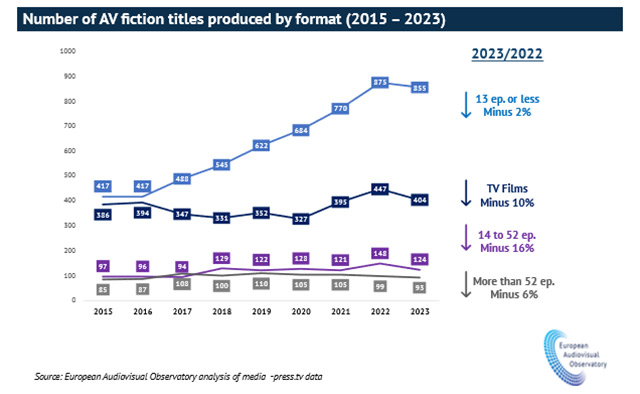Bussiness
A Million-Dollar Chinese Car Is Europe’s Next Threat

(Bloomberg Opinion) — The Hongqi L5 might not be the most obvious risk to Europe’s struggling auto industry.
Weighing in at more than three tons, as long from bumper to bumper as a four-berth campervan, made in minute numbers and available only to carefully-vetted customers, the world’s only million-dollar car comes with a green-and-purple interior that makes it look less like an economic threat than the vehicle the Joker might drive to take on the Batmobile.
And yet the revival of Hongqi — a somewhat faded limousine brand with the same connotations of political power and luxury in China as Lincoln has in the US, or Rolls-Royce in the UK — threatens to sever the few remaining strands of goodwill holding together the world’s biggest channel of merchandise trade.
Right now, car markets in China and the European Union are on the brink of an all-out trade war. EU governments last week voted to impose tariffs as high as 45% on electric vehicles imported from China, approaching levels in the US that run as high as 100%. Beijing said Tuesday is was investigating retaliatory duties on European cars with large gasoline engines, as well as slapping a 39% levy on brandy.
There’s a rule of brute national interest in such decisions. French and Italian car marques are barely seen in China, so Paris and Rome were strongly in favor of the car tariffs. The case against import taxes was made by Berlin — whose brands until recently accounted for about one in four Chinese car sales — alongside Hungary and Slovakia, home to multiple German auto plants. Brussels’s restrictions on Chinese EVs might offer breathing space for European competitors to catch up, while Beijing’s penalty for large-engined cars could hit German exports hard and favor Hongqi’s resolutely old-fashioned line of gas-guzzlers.
That’s worrying, because the top end of the market is the one place where European cars are still holding on in China. The market share of German carmakers in the mainland has slumped of late, from 25% last January to 17% in August. In the first eight months of the year, Volkswagen AG’s key brands shifted just 1.7 million units, their worst sales performance for the period since Xi Jinping became president in 2012. VW’s second-quarter sales volumes in China fell 19% from a year earlier and operating income was down 30%, Chief Financial Officer Arno Antlitz told investors in August.
The picture at the premium end is far better. While sales of VW-badged cars fell more than a third this year from the first eight months of 2019, those with the Audi and BMW AG marques are up by 3.9% and 1.9% respectively, while Benz is down a mere 2.2%.
That’s why the return of Hongqi should be worrying German executives. For many years, the brand was a bit of a basket case, kept going by state-owned China FAW Group Co. for heritage, rather than financial, reasons. The 7.18 million yuan ($1.02 million) price tag on an L5 isn’t the sign of a serious carmaker so much as FAW’s patriotic determination not to be out-blinged by Bentley and Maybach.
Things are changing with blistering speed, however. FAW, one of VW’s joint-venture partners in China, announced plans in 2020 to spend billions reviving the brand. It brought in Giles Taylor, former design chief of BMW’s Rolls-Royce, to jazz up the image of its vehicles. The lineup has even been electrified a bit with the export-oriented EH7 sedan and EHS7 SUV, which have been doing the rounds of European auto shows and garnering decent (if occasionally perplexed) reviews.
The most striking change is in Hongqi’s home market, however. Sales volumes have grown by leaps and bounds, to the extent that a make that was all but extinct a few years ago has now overtaken Buick — for many years one of the best-selling brands, with similar local connotations of power and wealth on the mainland. It’s now nipping at the heels of BMW, too. The halo effect from the ultra-premium L5 may count for something, but the key appeal of its best-selling vehicles like the H5, HS5 and E-QM5 appears to be that they offer a cheap way into the luxury space, in a China where consumer spending still looks shaky. Coming in at around 150,000 yuan or less, asking prices are about half what you’d pay for a premium European car.
China’s auto market can be a brutally unforgiving place, and Hongqi has struggled for years to attract the loyalty of buyers. If retaliatory tariffs help to sustain the current revival, however, it could threaten the one remaining stronghold of European carmakers in China — and, with it, the political will that’s preventing the current clean technology trade war intensifying further. We’ve already seen a similar dynamic play out in solar power.
Chinese officials who’d take pride from seeing a state-owned maker of government limousines take on fancy European models in the premium space should be careful what they wish for. Right now, China needs its export sales to bring cash into an economy in desperate need of stimulus. A bruised and embittered European auto industry further raising trade barriers isn’t going to help that objective.
More From Bloomberg Opinion:
This column does not necessarily reflect the opinion of the editorial board or Bloomberg LP and its owners.
David Fickling is a Bloomberg Opinion columnist covering climate change and energy. Previously, he worked for Bloomberg News, the Wall Street Journal and the Financial Times.
More stories like this are available on bloomberg.com/opinion
Catch all the Business News , Breaking News Events and Latest News Updates on Live Mint. Download The Mint News App to get Daily Market Updates.
MoreLess










